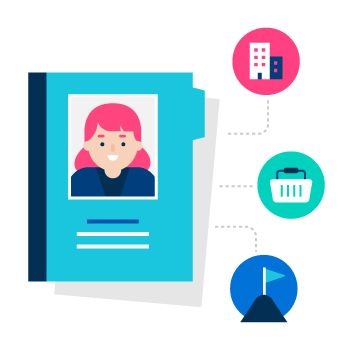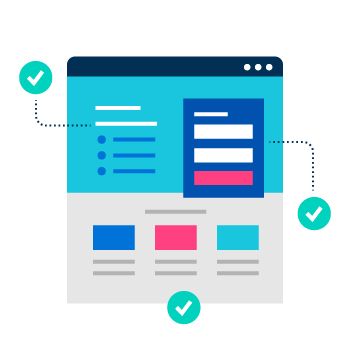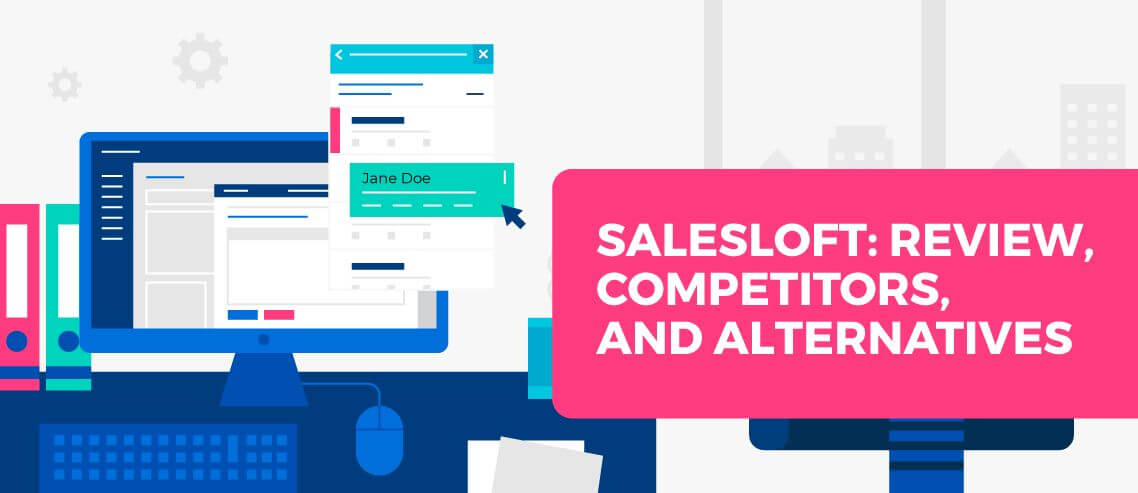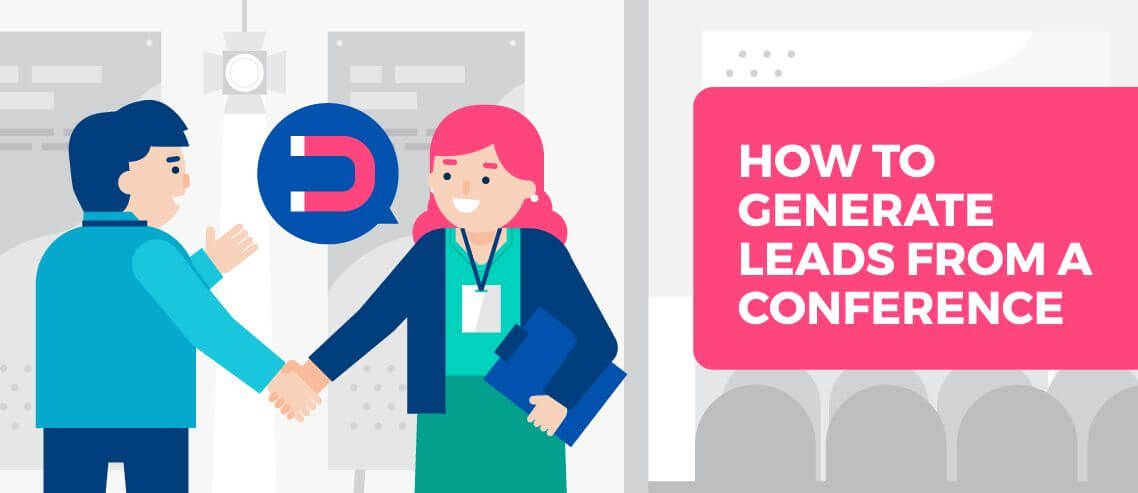7 Lead Generation Strategies for Digital Marketing Agencies in 2021

Contents
Digital marketing agencies face a lot of challenges. You have to manage your team’s workload, retain employees and clients, onboard new talent, maintain effective communications, and develop new services and processes – and that’s before you even start worrying about what your competition is doing.
But despite all those issues, one challenge stands above the rest as far as agencies are concerned. Two-thirds say their biggest priority of all is winning new business – comfortably ahead of any other challenge or action.
Why You Shouldn’t Rely on Client Referrals
First off, you might be thinking: “I already have the perfect lead generation strategy: referrals.”
You’re not alone. When it comes to winning new business, a lot of agencies lean heavily on their referral network. In fact, 55% say it’s their main source of new business.
This might have worked well for you in the past, but you shouldn’t rely on referrals as your primary – or only – strategy for bringing in new leads.
There are two pretty compelling reasons why placing too much focus on referrals isn’t in your best interest:
- Leveraging your network isn’t always scalable. After all, you only know so many people. Once you’ve asked them all for referrals, that particular revenue stream has run dry. And when that happens, you might not have another pipeline to fall back on.
- Referrals don’t always win you the right kind of business. It’s like a blind date – you don’t know them, and they don’t know you. Just because someone in your network refers a potential client, that doesn’t automatically make them a good fit for your agency.
Generate Leads for Your Digital Agency With These 7 Strategies
You need more leads to win more business. And I’ve just told you to stop focusing so heavily on referrals. So what else should you be doing?
Here are seven strategies digital agencies can use to generate more leads.
1. Define Your Ideal Customer
 There’s no benefit to generating dozens, or hundreds, or thousands of leads if they have no chance of turning into clients who are a great fit for your agency.
There’s no benefit to generating dozens, or hundreds, or thousands of leads if they have no chance of turning into clients who are a great fit for your agency.
Yet the majority of salespeople say that 50% or less of prospects ultimately turn out to be a good match. That means your sales team could be wasting a huge amount of time speaking to the wrong people.
That’s why the first part of your new lead generation strategy should be defining your ideal customer.
To do this, identify your current best clients – those that have been with you longest, or pay you the highest retainers, or see the best results. Then interview those clients to learn about their:
- Company background (headcount, revenue, location)
- Buying process and decision-makers
- Immediate and long-term goals
- Biggest pain points
- Favorite websites and social networks
This will enable you to craft messaging that resonates with the right prospects, and helps you reach them on their preferred platforms.
2. Leverage Guest-Speaking Opportunities
Public speaking can be a fantastic way to get in front of new audiences and demonstrate your expertise. Speaking at events is a double win for lead gen:
- You can drive enquiries through calls to action (CTAs) in your speech. For instance, you can urge people to download your ebook or contact your customer success team to find out more about the topic you’re discussing.
- You can network after the event. These post-speech networking opportunities are a fantastic chance to hand out your business card and connect with potential prospects.
However, to maximize your results from guest speaking, you need to choose the right event.
Speaking at a big marketing conference might look great on your resume, but those types of events are often pretty ineffective from a lead generation perspective because:
- There are potentially dozens of your competitors trying to attract your prospect’s attention
- The environment is less personal, with potentially hundreds of people watching your speech, which often means prospects feel less able to approach you at the end and strike up a conversation
Instead of these big-name conferences, look out for niche, industry-specific events. For instance, if you have a lot of SaaS clients, try speaking at events for SaaS startups. You’ll likely be one of a handful of digital marketers in attendance, and the audience will naturally assume you’re an expert on their industry, which makes you extremely valuable.
3. Get Your House in Order
 It constantly amazes me how many digital marketing agencies are bad at marketing themselves.
It constantly amazes me how many digital marketing agencies are bad at marketing themselves.
If your own online presence doesn’t effectively demonstrate that you know digital marketing inside and out, it can do a lot of damage to your credibility.
That means if you specialize in UX, your onsite user experience needs to be seamless. If you do SEO, you should be ranking strongly for the right keywords. And if you do content marketing, you should have superb content and a backlink profile that’s full to bursting.
In other words, you need to make your website the best possible case study for your expertise.
As an absolute minimum, every landing page should be focused toward driving a single action. Use clear, compelling CTAs on all of your key pages, based on the Require, Acquire, Desire methodology:
- Require: Ensure users have all the “required” information before they click
- Acquire: Your CTA button should be easy to find and click
- Desire: Make sure the outcome from clicking the button aligns with your user’s needs
4. Offer Something of Value
Inbound marketing generally delivers more cost-effective results than outbound sales. 53% of marketers say inbound achieves a higher return on investment, compared to just 16% who say the same for outbound.
However, it’s not a guaranteed lead generator. Inbound relies on prospects handing over their contact details – and they won’t do that if you’re not offering anything of value in exchange.
So what does it take to get those all-important names, email addresses, and phone numbers? That depends on your prospects’ position in the sales funnel:
- If they’re predominantly at the top of the funnel, offer content that relates to one of their key pain points, such as an ebook or webinar.
- If they’re further down the funnel, try something like a free SEO audit, or analysis of their Google or Facebook ad accounts. To progress the conversation, follow up with top-level insights or specific actions, rather than an immediate sales pitch.
5. Warm Up Your Cold Outreach
Inbound marketing might deliver the best ROI, but that doesn’t mean cold outreach can’t be an effective lead generation tactic. In particular, startups may need to rely on outbound in the short term while they build up their inbound capabilities.
That said, randomly cold calling and emailing is unlikely to deliver the results you need. So what’s the solution?
Lean on the ideal customer profile you defined at step one to identify all the characteristics of a perfect prospect, then find people who tick your boxes.
Next, do your research. Three-quarters of people say they only engage with personalized messaging, so it’s vital that you understand as much as possible about your prospects before you reach out to them for the first time.
This requires a little more effort than simply sending the same generic email to thousands of prospects at once, but it will yield much better results. To save time, use Mailshake to send personalized cold emails at scale.
6. Nurture Prospects Who Aren’t Ready to Convert
 Only about 4% of visitors to your website are actually ready to buy.
Only about 4% of visitors to your website are actually ready to buy.
That doesn’t mean they’ll never be ready, though. They could be a perfect fit for your product – they’re just not in the market right now.
You definitely don’t want to ignore these people. But at the same time, they’re unlikely to sign up for a product demo or consultation at this stage.
It’s your sales team’s job to nurture these visitors until they’re in a position to buy. But how can you do that if you don’t know who they are?
Try creating a “transitional CTA” that compels these users to take some sort of action in exchange for their contact details. For instance, they could hand over their email address for access to:
- A free tool
- A template form for a common process related to your product and their pain points
- An explainer on how to carry out a common task
7. Build Better Lead Capture Pages
Think of your lead capture page as the home stretch in your lead generation marathon.
You’ve worked so hard optimizing your website, creating fantastic content, and building a streamlined user journey. The last thing you want is for a low-quality lead capture page to turn off a hot prospect at the last minute.
At the point they’re ready to convert, your prospective lead wants to know four things:
- How can you help them?
- How much will it cost?
- What separates you from the competition?
- Do you genuinely know your stuff?
The more transparent you are around those questions, the more likely you are to convert those visitors into leads. Try adding the following elements to your lead capture page:
- Trust factors, like review scores, client logos, and testimonials
- Pricing information (if possible)
- Specific USPs, backed up with clear evidence where possible
- A video that explains how you get results





